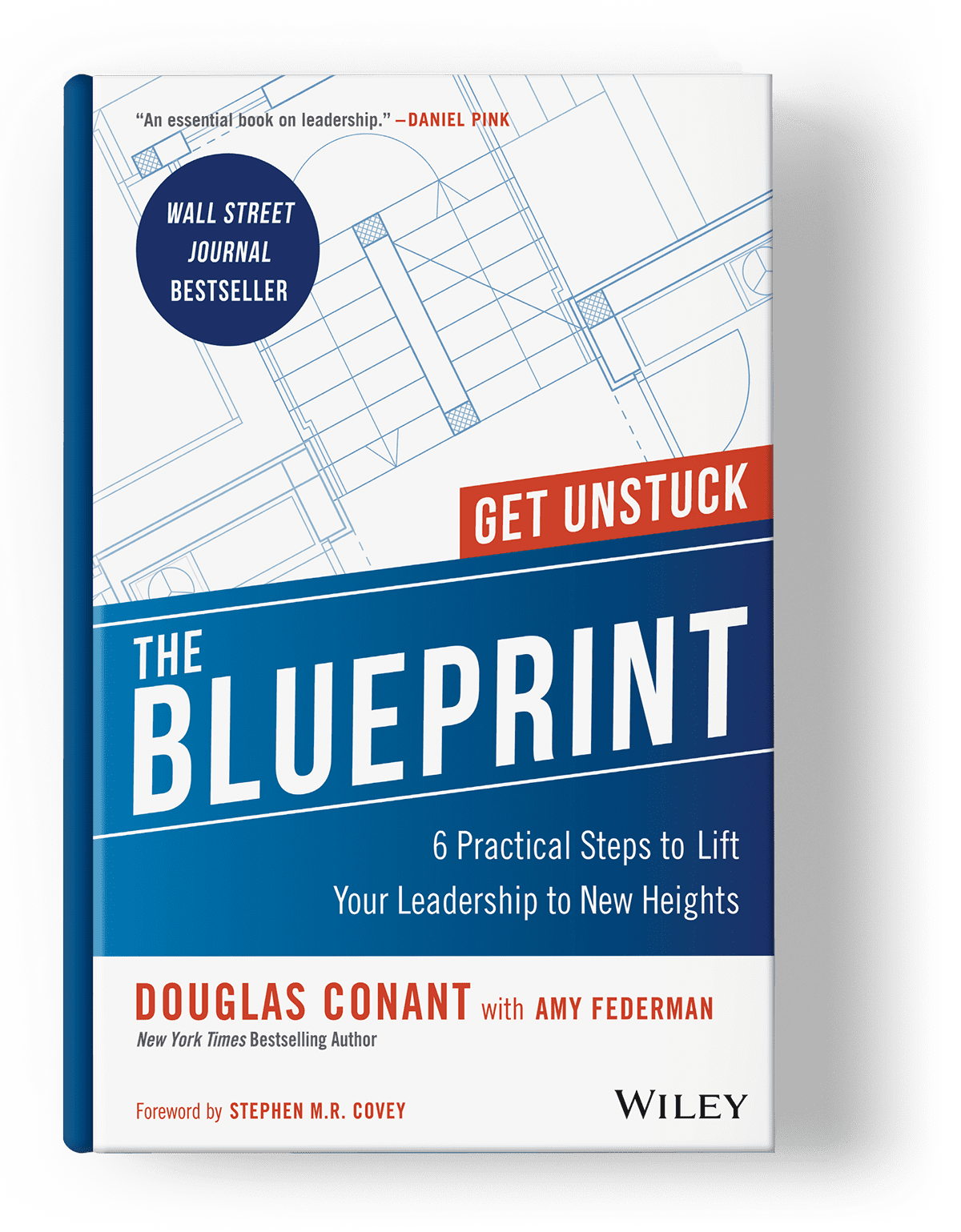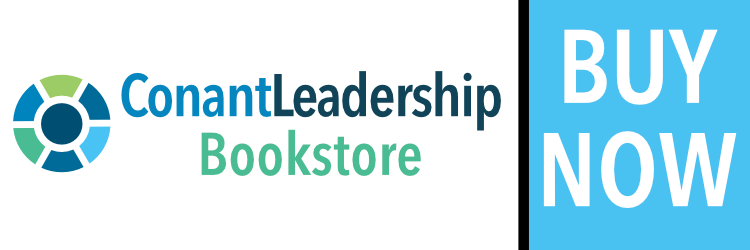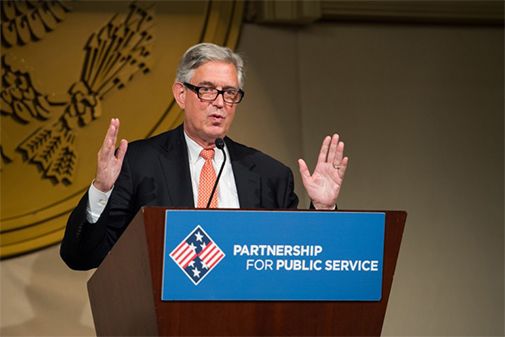At ConantLeadership, we’re committed to lifelong learning and continuous improvement. In service to your leadership growth, each month we curate the Leadership That Works Newsletter, a digest of timely resources from around the web. We prepare this resource in order to:
- Share actionable advice from top leadership luminaries
- Celebrate a range of viewpoints worthy of consideration (inclusion is not an endorsement)
- Contextualize workplace trends through a leadership lens
- Illuminate cultural recalibrations in the world of work
- Support your personal development in life, leadership, and beyond
In this month’s Leadership That Works Newsletter – What employees want from work in 2023; help employees ‘speak up’; the motivation science behind procrastination; find your fulfillment; reimagining the corporate cafeteria, and more. As always, we’re sharing the content from our newsletter here on our blog in case you’re not subscribed to our mailing list. If you find these links enriching, you can sign up to receive our newsletter right here.
What Employees Want in 2023
“Despite the headlines of massive layoffs in the tech industry, the job market is still running hot,” reports Jo Constanz in this Bloomberg piece on how to attract and retain talent this year. While “pay is paramount for most people,” it’s only one piece of the puzzle: “In the current environment companies need to find new ways to distinguish themselves as an employer of choice.”
After talking to experts and evaluating data, Constanz reports that the top five most powerful ways to attract and engage employees are:
1. Remote work
2. Flexibility
3. Sustainable work
4. Financial Health
5. Job security
Get the full story on how to offer and implement each of these five key differentiators here.
For more on attracting and retaining talent:
- Read this Harvard Business Review article on rethinking your employee value proposition to go beyond offering material comforts to facilitating ‘thriving.’
- Engage with this new ConantLeadership blog about how a new world of work requires a new way to lead.
- Explore this Fast Company piece on 4 things leaders should be increasingly aware of this year including paying more attention to accommodating neurodiversity.
- Dive into this World Economic Forum report on why flexible working benefits workers and companies.
- Check out this Entrepreneur piece featured in our most recent newsletter which advises “inviting” rather than “demanding” employees return to the office.
- Read this Campaign post about how leaders can show people they matter.
To Help People ‘Speak Up,’ Step Up
Organizations suffer “when employees stay silent on key issues,” and they flourish when employees feel empowered to “speak up to learn from mistakes, challenge decisions and behavior, and request support on issues such as mental health,” writes Megan Reitz in this Calm post on helping leaders create psychologically safe environments.
Because the benefits of a vocal workforce are numerous, “HR departments have rushed to roll out ‘speak up’ initiatives,” that invite “employees to be brave and have courageous conversations.” But Reitz warns these initiatives will fall flat without leaders “who make it safe for us to speak up,” by being “mindful of their conversational habits,” and disrupting and changing the habits that are not conducive to employees feeling heard.
Find Your Fulfillment
- For more on this, explore the 6-step Blueprint process, a practical approach for discovering your leadership purpose which includes prompts for reflection and a roadmap for continuous growth.
- Then, check out our conversation with Liz Wiseman, which posits that people burnout from lack of meaning and impact, rather than from overwork.
The Motivation Science Behind Procrastination
“The bad news is that procrastination is bad for your health,” writes Susan Fowler in this SmartBrief post. The even worse news is that much of the advice from experts creates “a vicious circle of pressure to perform that perpetuates procrastination,” rather than helping busy leaders resist its siren song.
Some popular tactics advise tailoring your approach to your personality style. But Fowler, one of the experts who used to advise this very approach, has now changed her mind and suggests a different path forward: “To solve a procrastination problem, you need to understand the foundational psychological reasons you procrastinate—no matter your personality type.” Doing this requires “applying motivation science” to get to the why behind the behavior. Turns out there are three “psychological needs required for optimal motivation,” and you can evaluate what’s holding you back with a trio of questions in each situation:
- Is my need for choice eroded?
- Is my need for connection thwarted?
- Is my need for competence undermined?
Get the full story and a more robust explanation of each of the three questions here.
What Is ‘Toxic Positivity?’
“Toxic positivity is the belief that people should maintain a positive mindset no matter how dire or difficult a situation,” writes Cloey Callahan in this WorkLife piece. When employees are facing hard situations—in life or work—and they are told to “just be positive,” or are waved off with a feel-good platitude, it has the effect of “minimizing, negating, or erasing,” that person’s experience. In the workplace, a tacit or explicit expectation that employees exhibit unyielding happiness leads to burnout from “feeling obligated to express an emotion that you aren’t actually feeling,” and it “diminishes connections between colleagues,” because there is less opportunity for empathy.
If leaders want to “foster a sense of belonging,” they should create a culture where “showing up as your whole self,” is encouraged, “even if you’re having a bad day.” Get the full story here.
- For more on this, explore our conversation with Brené Brown on why empathy is the secret source of leadership connection.
- Then check out our conversation with Susan Cain about how acknowledging the ‘bittersweet’ can forge closer connections.
How to Sponsor Others to Greatness
“Sponsors leverage a vibrant mix of connection and action to advance high performers into leadership,” write the authors of this Harvard Business Review article on how to develop great leaders in a sponsorship role. Increasingly, companies are investing in “sponsorship initiatives to improve the career advancement of their diverse hires.” Sponsors differ from mentors, “who offer moral support or coaching,” in that they “spend their own political capital to advance more junior sponsees, through advocacy and other tactical moves.” As sponsorship is relatively new, leaders need practical guidance for how to make these special leadership development relationships a success. The authors talked to people from dozens of companies and found six key things leaders can do to sponsor others to greatness. The first thing is committing to showing up for sponsees: “Chronic rescheduling sends a message, however unintended, that the relationship isn’t a priority.” Get the full story and explore all six key things that great sponsors do here.
Is It ‘Quiet Quitting’ or ‘Calibrated Contributing?’
After an impassioned plea to stop using the term ‘quiet quitting’ in a previous edition of this newsletter, hopes that the phrase would fade from the lexicon have been in vain. For better or for worse, the terminology has persistent staying power, and continues to spark conversation in the leadership space.
One thoughtful addition to the ongoing conversation is this post by Jim Detert in MITSloan Management Review. Detert observes that, in the pandemic era, millions discovered “that what they were getting out of work—be it their financial compensation or a sense of control or respect—didn’t match what they were putting in.” In short, some employees realized they were “giving more than they were getting,” and may have scaled back their efforts commensurate to expectations and rewards. He argues “quitting” is a “derogatory, adversarial” way to describe the behavior of what he calls “calibrated contributors—employees who are rationally matching their effort to what they get in return.” The reframe doesn’t deride or imply a moral failing, but rather acknowledges “calibrated contributors” as people “trying to enact their views of fairness,” while continuing to perform their jobs. Get the full story here.
- For more on this, explore this Fast Company piece on “quiet promoting” and check out our August, 2022 newsletter which includes a deeper dive on “quiet quitting.”
- Read in Gallup why employee engagement needs a rebound in 2023.
Reimagining the Corporate Cafeteria
“As the American office emerges from its pandemic slumber, can the cafeteria survive layoffs, a workweek that sometimes requires only a few days in the mother ship and a new, more demanding generation of employees?,” asks Kim Severson in this New York Times article on the state of the company meal.
Although one expert warns that, “the traditional big cafeteria is dead,” the reality remains that office workers still need to eat, and “eating together fosters interaction.” So, “companies are blowing up the cafeteria,” in favor of more creative ways to attract young talent, including redesigning corporate dining offerings around “respite and recreation,” and upgrading meal programming with perks like “cocktail bars,” “sunset oyster-shucking parties,” and perhaps most creatively, “restaurants that function like subsidized corporate cafeterias but are open to the public.”
While some of these modern initiatives may seem frivolous, experts say it’s wise to participate in the cafeteria’s evolution: “Smart leaders know that informal interaction can keep corporate culture from eroding as remote work persists, and may be the main purpose for coming to the office in the future,” and food has become “an important recruitment and retention tool” in the new hybrid work milieu. Get the full story here. (This article may appear behind a paywall.)
The Cost of Layoffs
Why have there been so many layoffs recently despite a strong job market and a growing economy? In this Stanford Graduate School of Business piece, Professor Jeffrey Pfeffer says the layoffs are “copycat behavior,” that amounts to a “social contagion,” wherein “behavior spreads through a network,” whether or not it is wise or beneficial: “Layoffs are the result of imitative behavior and are not particularly evidence-based.”
The trend of layoffs worries Pfeffer who says, “layoffs don’t work to improve company performance,” and academic studies show that “workplace reductions don’t do much for paring costs.” In fact, larger companies participating in the social contagion of layoffs may actually be incurring added costs, rather than accruing savings: “Severance packages cost money, layoffs increase unemployment insurance rates, and cuts reduce workplace morale and productivity as remaining employees are left wondering, ‘Could I be fired too?'” Ultimately, while there are exceptions, Pfeffer says that usually, “layoffs are basically a bad decision,” and “do not solve what is often the underlying problem, which is an ineffective strategy, a loss of market share, or too little revenue.” And, he warns, “layoffs increase mortality by 15-20% over the following 20 years,” and “increase the odds of suicide by two and a half times.” In the wake of the pandemic, he says, “we ought to place a higher priority on human life.” Get the full story here.
Insights & Resources from ConantLeadership
‘A New World of Work Requires a New Way to Lead’—Stephen M.R. Covey, McKinlee Covey, and Doug Conant on Leadership in 2023
In this recent blog, 3 top leadership experts explain why leaders in the new world of work must evolve from a “command and control” model to a “trust and inspire” approach.
‘Change Comes from the Top’—James D. White, Krista White, and Doug Conant on Building Inclusive Cultures
In this recent blog, learn from the authors of the book, Anti-Racist Leadership why “inclusiveness isn’t simply nice to have; not being inclusive will lead to failure.
Doug Conant on The Business Builders Show with Marty Wolff
In this new podcast interview, learn how important it is to be intentional on your leadership journey, especially as you navigate a VUCA (volatile, uncertain, complex, and ambiguous) world.
November’s Leadership That Works Newsletter
In our final newsletter of 2022: Don’t call them ‘soft skills,’ how to ‘invite’ people back to the office, the power of a ‘clearness committee,’ understanding ‘burnout,’ and more.
 About the Author: Amy Federman is ConantLeadership’s Director of Content and Editor in Chief, and co-author with Doug Conant of the WSJ bestseller, The Blueprint.
About the Author: Amy Federman is ConantLeadership’s Director of Content and Editor in Chief, and co-author with Doug Conant of the WSJ bestseller, The Blueprint.
(Cover photo by Giorgio Manenti on Unsplash)






0 Comments